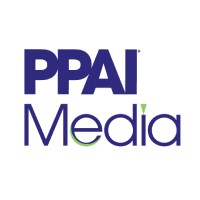UPDATES: The European Union will delay planned tariffs on over €93 billion ($107.6 billion) of U.S. goods entering the bloc for the next six months, as the EU and United States work toward implementing the framework trade deal agreed to last week. On August 6, the president issued an executive order that would double the existing 25% tariff on India announced in late July, with the new rate taking effect August 27.
Just hours before new tariff rates were set to go into effect on August 1, President Donald Trump unveiled a new framework for his trade policy, including higher rates for some countries and a delayed start date.
Although a baseline 10% tariff rate for imports into the United States will remain, that rate will apply only to countries with which the U.S. has a trade surplus, according to an executive order signed on Thursday.
Countries with which the U.S. has a trade deficit – of which there are about 40 – will now pay a 15% tariff. However, more than two dozen countries have tariff rates that are higher than 15% either because they’ve previously reached a trade agreement with the U.S. or because Trump sent their leaders a letter dictating a higher tariff, CNN reported.
Those countries are:
- Algeria: 30%
- Bangladesh: 20%
- Bosnia and Herzegovina: 30%
- Brunei: 25%
- Cambodia: 19%
- India: 50%
- Indonesia: 19%
- Iraq: 35%
- Kazakhstan: 25%
- Laos: 40%
- Libya: 30%
- Malaysia: 19%
- Moldova: 25%
- Myanmar: 40%
- Nicaragua: 18%
- Pakistan: 19%
- Philippines: 19%
- Serbia: 35%
- South Africa: 30%
- Sri Lanka: 20%
- Switzerland: 39%
- Syria: 41%
- Taiwan: 20%
- Thailand: 19%
- Tunisia: 25%
- Vietnam: 20%
Items loaded onto ships by August 7 as well as those already in transit won’t be affected by the new tariff rates if they reach the U.S. before October 5, according to the executive order.
On Thursday, just hours before a 30% tariff rate was set to take effect, Trump said he would not raise U.S. tariffs on Mexican goods beyond the current 25% for 90 days, buying more time to reach a trade agreement.
RELATED: ‘Tremendous Spirit:’ Canadian Promo Pros Seeing National Pride Amid US Tariffs
Canada isn’t as lucky. Trump increased the tariff rate on imports from Canada that aren’t exempt under the U.S.-Mexico-Canada Agreement from 25% to 35%, effective August 1.
- The agreements don’t affect 50% tariffs on steel and aluminum imports, which apply to all countries except the United Kingdom and includes derivative products that contain those metals.
- On July 8, Trump announced a 50% tariff on copper imported into the U.S. also starting August 1.
Trade Deals Reached
China, the United Kingdom and Mexico are the only major trading partners that didn’t see tariff rates change under the executive order.
China: A 90-day extension of a U.S. trade truce with China appears likely, as negotiations between the two countries wrapped up in Sweden. The current tariff arrangement is set to end August 12.
RELATED: Tariff Turmoil: How Promo Is Managing Stress And Anxiety
United Kingdom: The U.S. trade agreement with the United Kingdom was announced in May and took effect on June 30. A blanket 10% tariff now applies to U.K. goods imported into the United States. Law360 reported on July 25 that the U.K. is the only nation so far to receive guidance from U.S. Customs and Border Patrol.
On Wednesday, Trump signed an executive order ending the de minimis loophole for low-value packages shipped from all countries. Starting August 29, any items shipped through the international postal network will be subject to tariff rates based on the value of the package and its country of origin.
- This follows Trump closing the de minimis loophole for specifically China and Hong Kong earlier this year.
Promo Perspective
With the highest average tariff rate since 1934, consumer prices are expected to rise by 1.8% in the short run, assuming a full pass-through of costs to consumers and no policy reaction by the Federal Reserve, according to the Yale Budget Lab.
Since Trump announced (and paused) sweeping tariffs in April, promo firms have been preparing for price increases on imported goods across a variety of popular categories, including apparel, drinkware and technology accessories. As a result, distributors may face tighter margins or be forced to pass costs to end users, potentially reducing order sizes or shifting preferences to domestic alternatives.
Of course, the biggest fear is that budget-conscious buyers might reconsider their branded merchandise strategies altogether.
Industry stakeholders should prepare for supply chain reassessments, price adjustments and customer education as the market reacts to renewed trade pressures and operational uncertainty.


